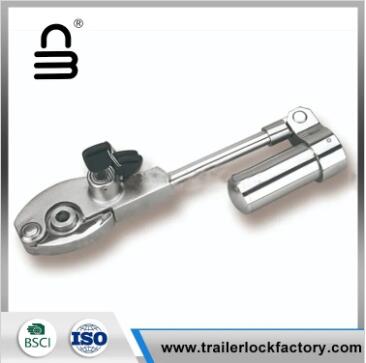Understanding the Transmission Keyed Clutch Lock: How It Enhances Vehicle Safety and Performance
2024-08-20
In the world of automotive engineering, safety and efficiency are paramount. Among the many components that contribute to these aspects is the Transmission Keyed Clutch Lock. This device plays a critical role in ensuring that a vehicle's transmission system operates smoothly and securely. In this blog, we'll delve into what a Transmission Keyed Clutch Lock is, how it works, and why it's an essential component in modern vehicles.
What is a Transmission Keyed Clutch Lock?
A Transmission Keyed Clutch Lock is a specialized locking mechanism designed to secure the clutch and transmission system in a vehicle. This lock ensures that the transmission stays in the desired gear and prevents unintentional disengagement or shifting. The term "keyed" refers to the specific design that includes a keyway or slot, which aligns with a corresponding key on the clutch or transmission shaft. This design ensures a secure fit and precise engagement, providing both safety and stability during vehicle operation.
How Does the Transmission Keyed Clutch Lock Work?
The primary function of the Transmission Keyed Clutch Lock is to secure the clutch to the transmission shaft, preventing any unwanted movement or disengagement. Here's a closer look at how it operates:
1. Keyed Design: The lock features a key and keyway system, where the key is usually a metal protrusion or slot on the clutch or transmission shaft. This key fits into a corresponding slot on the lock, ensuring that the components are securely aligned and locked in place.
2. Locking Mechanism: Once the key is engaged in the keyway, the lock mechanism is activated. This can involve a variety of locking methods, such as a spring-loaded pin or a screw-type fastener, which ensures that the key remains securely in place during operation.
3. Prevention of Slippage: By securely locking the clutch to the transmission shaft, the Transmission Keyed Clutch Lock prevents any slippage or unintended disengagement. This is crucial for maintaining the proper functioning of the transmission system, especially under heavy loads or during high-speed operations.
4. Ease of Maintenance: The keyed design also makes it easier to disassemble and reassemble the clutch and transmission components during maintenance. The key ensures that the components are always properly aligned, reducing the risk of misalignment and potential damage during reassembly.
Why is the Transmission Keyed Clutch Lock Important?
The Transmission Keyed Clutch Lock offers several benefits that contribute to the overall safety and performance of a vehicle:
1. Enhanced Safety: By preventing unintended disengagement of the clutch, the lock ensures that the vehicle remains in the desired gear, reducing the risk of accidents caused by sudden gear changes or transmission failure.
2. Improved Performance: The secure connection provided by the lock allows for more efficient power transfer from the engine to the wheels. This leads to better vehicle performance, particularly in situations that demand high torque or power, such as towing or off-road driving.
3. Durability and Longevity: The keyed design reduces wear and tear on the clutch and transmission components, as it prevents slippage and misalignment. This extends the lifespan of these critical parts, reducing the need for frequent repairs or replacements.
4. Consistency in Operation: The Transmission Keyed Clutch Lock ensures consistent and reliable operation of the transmission system, which is essential for both everyday driving and more demanding applications.
Conclusion
The Transmission Keyed Clutch Lock may seem like a small component, but its impact on vehicle safety and performance is significant. By ensuring a secure connection between the clutch and transmission, this lock plays a crucial role in preventing accidents, enhancing vehicle performance, and extending the life of key components. Understanding how this device works and its benefits can help you appreciate its importance in maintaining a reliable and efficient vehicle.



